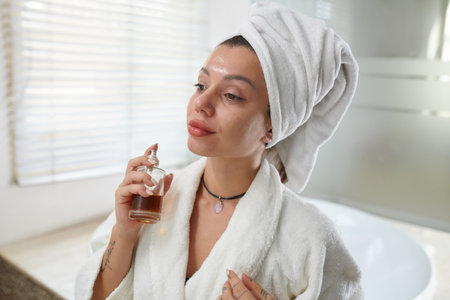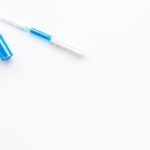Introduction: The Link Between Hydration and Skin Health
If you’ve ever wondered why your skin sometimes looks dull, flaky, or just not as vibrant as youd like, you’re not alone. As a guy who’s spent years chasing that healthy, confident glow (yeah, we care about our skin too), I’ve learned that hydration is one of the most underrated secrets to great skin. But lets get real—there’s a lot of hype out there. Does chugging gallons of water actually give you that Instagram-level radiance? Or is it all just another wellness myth? In this article, I’m breaking down why hydration really matters for your skin, busting some common misconceptions, and digging into the science that keeps your face looking fresh instead of fried. Whether you’re dealing with dryness after a day in the sun or trying to keep those fine lines at bay, understanding how hydration impacts your skin is key. Let’s dive in and get clear on what works—and what doesn’t—when it comes to achieving truly radiant skin.
2. How Hydration Impacts Skin Appearance
If you’ve ever woken up after a night of too much fun and not enough water, you know firsthand how dehydration can mess with your skin. Proper hydration is one of those underrated habits that keeps your skin looking plump, clear, and vibrant from the inside out. Let’s break down exactly how this works.
The Science Behind Hydrated Skin
Your skin is about 64% water. When you’re well-hydrated, your body can efficiently transport nutrients to skin cells, flush out toxins, and maintain elasticity. On the flip side, when you’re dehydrated, your skin loses its bounce and glow, making fine lines and dullness more noticeable.
What Happens When You’re Hydrated vs. Dehydrated?
| Hydrated Skin | Dehydrated Skin |
|---|---|
| Looks plump and youthful | Appears dull and tired |
| Smooth texture | Rough or flaky patches |
| Even complexion | Redness or uneven tone |
| Minimized fine lines | Enhanced appearance of wrinkles |
| Natural radiance | Lackluster appearance |
How Water Works From the Inside Out
Your daily water intake doesn’t just help your organs function; it’s also fueling your skin. Staying hydrated helps maintain your skin’s barrier function, which locks in moisture and blocks out irritants. This translates to less irritation, fewer breakouts, and a smoother overall look. So if you want that natural “glow,” reaching for a glass of water might be just as effective as grabbing a new serum.
![]()
3. Hydration Habits: How Much Water Do You Really Need?
If you’ve ever found yourself chugging water because you heard it’s the “secret” to glowing skin, you’re not alone. But how much is enough—and does it change depending on your lifestyle? For most guys, the old “eight glasses a day” rule is more of a ballpark than a hard-and-fast science. The truth is, your hydration needs depend on more than just a magic number.
Climate matters. If you’re living in a hot and humid place like Florida or Southern California, you’ll lose more fluids through sweat and need to up your water intake. On the other hand, if you’re chilling in a cooler state or spending lots of time indoors with air conditioning or heating, dehydration can sneak up on you too—dry air zaps moisture from your skin faster than you might think.
Activity level is huge. If you hit the gym, run trails, or have an active job that keeps you moving, your body burns through its water reserves quicker. After sweating it out, replacing lost fluids isn’t just about quenching thirst; it’s about keeping your skin cells plump and healthy so they reflect light better—hello, natural radiance.
Lifestyle choices count as well. Maybe you drink coffee all morning or enjoy a couple beers after work. Caffeine and alcohol are both dehydrating, which means you need even more water to balance things out. And don’t forget, salty foods or high-protein diets can also increase your water requirements.
The best way to gauge your needs? Listen to your body. Thirst is an obvious signal, but pay attention to how your skin feels—if it’s tight or looks dull, you might be running low. For most American men, aiming for around 3–4 liters (about 13–17 cups) of fluid daily—including water from food and drinks—is a smart starting point. Just remember: what works for someone else might not be right for you. Adjust based on your climate, activity level, and habits—and watch your skin thank you for it.
4. Beyond Water: Hydrating Foods and Skincare
When it comes to achieving truly radiant skin, just drinking water isn’t enough. From my own experience as a guy who used to rely solely on chugging bottles of water every day, I learned that hydration goes way deeper—literally. Let’s dive into how your diet and skincare routine can make a big difference in locking in that moisture and giving your skin that healthy, American glow.
Hydrating Foods: More Than Just a Trend
What you eat matters as much as what you drink. Some foods naturally help hydrate your skin from the inside out. Here’s a quick breakdown of everyday American favorites that actually support skin hydration:
| Food | Hydration Benefit | How to Add It |
|---|---|---|
| Cucumber | Over 95% water content; rich in vitamins | Add slices to salads or sandwiches |
| Watermelon | Packed with water and antioxidants like lycopene | Snack solo or blend into smoothies |
| Oranges | High in vitamin C; helps collagen production | Peel and go for an easy snack |
| Celery | Electrolytes and water combined | Dip in peanut butter for a classic American bite |
| Greek Yogurt | Contains electrolytes and protein; supports skin repair | Makes a killer breakfast or dessert base |
The Role of Electrolytes: Keeping Moisture Where It Matters
If you’re hitting the gym or sweating it out on a summer hike, electrolytes are key. These minerals (think sodium, potassium, magnesium) help balance fluids in and out of your cells—crucial for keeping your skin plump, not parched. Sports drinks are one way, but honestly, natural sources like bananas, avocados, and dairy do the job without all the sugar.
Skincare Routines That Actually Work for Guys Like Us
I used to think skincare was just “a girl thing,” but trust me, basic routines work wonders. After testing countless products (and making some rookie mistakes), here’s what really works for locking in hydration:
- Cleansers: Go gentle—avoid harsh soaps that strip away natural oils.
- Moisturizers: Look for ingredients like hyaluronic acid or glycerin—they draw moisture into your skin and keep it there.
- Sunscreen: Every morning, even if it’s cloudy. UV damage = drier, older-looking skin.
- Nourishing Serums: If you want to level up, add a serum with antioxidants or peptides before moisturizing.
A Simple Routine That Supports Skin Hydration:
- Wash face with lukewarm water and mild cleanser (morning & night)
- Apply hydrating serum (optional)
- Smooth on moisturizer while skin is slightly damp to seal in water
- Finish with broad-spectrum SPF during the day
The Takeaway:
Your path to radiant skin goes far beyond just drinking water. Stack up on hydrating foods, keep those electrolytes balanced, and stick to a straightforward skincare routine—you’ll notice the difference when you look in the mirror or snap that next selfie.
5. Signs of Dehydration in Your Skin
It’s crazy how your skin can practically send up flares when it’s thirsty. If you’re aiming for that healthy, radiant look, understanding these signals is a game changer. The first thing I notice when my hydration slips is that my face feels tight—like I’m wearing a mask one size too small. That uncomfortable sensation usually shows up before I even see any visible changes. Next, dullness creeps in. Instead of that natural glow, my skin starts looking flat and almost grayish, especially under harsh lighting. Fine lines suddenly get more pronounced, not just around the eyes but across the forehead and cheeks too.
Rough or flaky patches are another dead giveaway. For me, those tend to show up around my nose and eyebrows—areas that soak up moisturizer like a sponge when they’re parched. Sometimes, there’s even a bit of itchiness or sensitivity to touch, which is always a red flag. And don’t get me started on breakouts: dehydrated skin will sometimes try to compensate by cranking out more oil, leading to clogged pores and surprise pimples.
But here’s the key—dehydration signs aren’t always just about needing more water. If you’ve been hydrating consistently but your skin still looks off, it could be hinting at something deeper: maybe your skincare routine is too harsh, the weather’s changed, or there’s an underlying health issue. Bottom line? Listen to what your skin is telling you. Spotting these cues early means you can tweak your habits before minor dryness turns into a full-blown problem.
6. Practical Tips for Staying Hydrated Every Day
If you’re like me—juggling work, workouts, and everything in between—making hydration a priority can feel like just another thing on the to-do list. But staying hydrated is a game changer for your skin and overall health, and it doesn’t have to be complicated. Here’s how American guys can seamlessly build hydration into their routines, no matter how busy life gets.
Keep Water Within Arm’s Reach
The easiest way I’ve found to stay hydrated is to always have a water bottle handy. Whether I’m driving to work, sitting at my desk, or heading to the gym, having water within reach makes it second nature to sip throughout the day. Invest in a durable, reusable bottle that fits your lifestyle—bonus points if it keeps your water cold during hot summer days.
Pair Hydration with Everyday Habits
Linking hydration to habits you already have helps make it stick. For example, I drink a glass of water every morning right after brushing my teeth—it wakes me up and starts my day off right. At work, I take a few gulps every time I check my email or get up for a break. These small rituals add up fast.
Hydrate Before, During, and After Workouts
If you hit the gym or play sports, don’t wait until you’re thirsty. Drinking water before, during, and after exercise helps keep your skin from looking dull and tired. I usually down a full glass about 30 minutes before hitting the weights, sip during my workout, and finish another bottle afterward—it really makes a difference in how refreshed I feel (and look).
Make It Interesting: Flavor It Up
If plain water isn’t your thing, try adding a squeeze of lemon or tossing in some cucumber slices for a subtle flavor kick without any added sugar. There are also plenty of zero-calorie electrolyte packets on the market that make hydration more appealing while supporting your skin’s glow.
Set Simple Reminders
Most of us need a little nudge now and then. Setting hourly reminders on your phone or using hydration tracking apps can help keep you accountable until drinking enough water becomes automatic.
Snack Smart for Extra Hydration
Don’t forget that certain foods—like watermelon, oranges, cucumbers, and celery—are loaded with water too. Snacking on these not only curbs hunger but also gives your skin an extra boost from the inside out.
Staying hydrated doesn’t require drastic changes; it’s about making small tweaks that fit your daily routine. Over time, these simple habits will help you achieve healthier-looking skin—and you’ll probably notice you feel better all around.
7. Conclusion: Long-Term Benefits of Hydrated Skin
Summing up, keeping your skin hydrated isnt just about chasing a short-term glow—its about investing in how you look and feel for the long haul. When your skin is well-hydrated, youre setting yourself up for fewer fine lines, less irritation, and that natural radiance thats hard to fake. Over time, staying on top of your hydration game can help prevent premature aging and keep your complexion smooth and resilient, no matter what life throws at you. Plus, lets be real—when your skin feels good, your confidence gets a boost too. The bottom line? Prioritizing hydration pays off every single day, helping you look sharp and feel your absolute best from the inside out.


